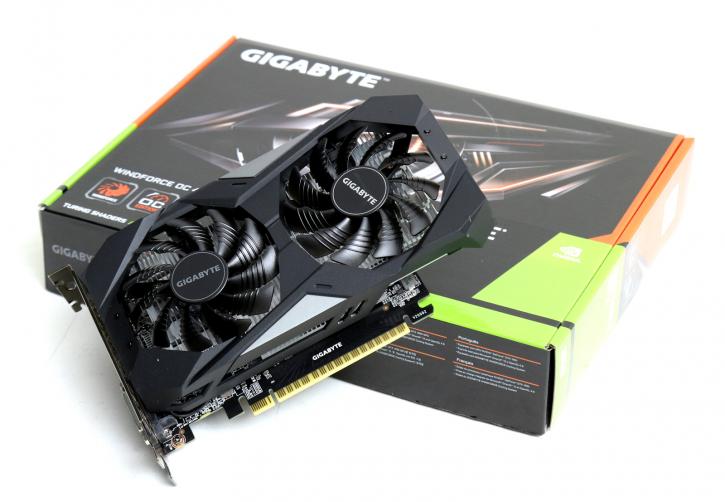Introduction
Gigabyte GeForce GTX 1650 GDDR6 Windforce OC
In this review, we look at the Gigabyte GeForce GTX 1650 WindForce GDDR6. It's cooled with some Windforce and a product that was designed for users on a budget, the card breathes and oozes that. This model comes with a rather new option, GDDR6 memory. The discussion has been for a while now that GDDR5 is running slowly towards a shortage, making GDDR6 cheaper. And for that reason, NVIDIA is rehashing some of the products towards GDDR6 graphics memory. The good thing is that alongside some slight configuration changes, the product a small notch faster. The market however is getting confusing with all the SKUs available, the regular GTX 1650 GDDR5, then a 1650 Super with GDDR6 and now 1650 regular with GDD6 memory. All the OC SKUs available from the AIBs, does not help with that either.
The GeForce GTX 1650 will have a price tag of roughly US$ 149~179 for the better cooled and designed AIB models. These cards are now fitted with 4GB GDDR6 memory based upon a 128-bit memory bus. While the clock frequencies of the GPU base and boost frequencies will vary a bit per board partner, the reference base clock speed is close to 1400 MHz. When the first rumors on the GeForce GTX (yes, with a G) surfaced, speculation was everywhere and we had doubts NVIDIA would actually release a new GTX while moving forward towards it's RTX branding. NVIDIA is now injecting Turing based GPUs into the mainstream called TU116 and this new GU117. To make it more affordable NVIDIA stripped away the RTX and DLSS features, which means there are no RT and Tensor cores in these products. It's a fall back towards the original shader design model. So to quickly recap; the 1650/1660 series is making use of the Turing architecture but will not have Raytracing and Tensor cores, this is why NVIDIA dropped the RTX suffix back to GTX. The GeForce GTX 1650 cards are to occupy a 149 to 179 USD price domain slash pricing level which coincidentally also is occupied by the AMD Polaris 20-based Radeon RX 570 series.
Gigabyte GeForce GTX 1650 GDDR6 4G Windforce OC
The GTX 1650 GDDR6 receives a lower boost clock but otherwise looks identical to the regular GTX 1650 with GDDR5 memory. According to the website, Gigabyte will release two models. Nvidia's G6 reference model gets a maximum boost clock of 1590MHz while the boost clock of the regular GTX 1650 is higher at 1665MHz. The WindForce OC, however, receives a boost clock of 1710MHz. The clock frequency for memory is 12 Gbps, and that leaves room for some tweaking alright. Summing it up:
- GeForce GTX 1650 GDDR6 (New) - 12.0 GHz GDDR6, 896 shaders at 1590 MHz boost (higher throughput).
- GeForce GTX 1650 GDDR5 - (Old) 8.0 GHz GDDR5 and 896 shaders at 1665 MHz boost (higher raw computing power).
As you can see from the above table, the 1650/1660 domain of graphics cards are getting very saturated. The reference frequencies for the GTX 1650 series are quite decent, with a reference base and boost clocks at 1,485 and 1,665 MHz respectively. The new GDDR6 cards, (if priced right) will serve NVIDIA's entry-level to mainstream segment and should offer a capable 1080p solution. NVIDIA is not distributing a reference design card to the media. Ergo, the reviews you'll see are based on AIB designed partner cards. This 75 Watt rated graphics card has 896 active shader processors. For this review, we are testing the WINDFORCE OC model that comes with a Boost frequency of 1710 MHz. Having smaller TU117 silicon it doesn't run too hot and in fact, is really energy efficient. This Turing 117 GPU empowered product keeps that GPU at roughly 65 Degrees C marker (max) depending on game load. But let's take a closer look first.


